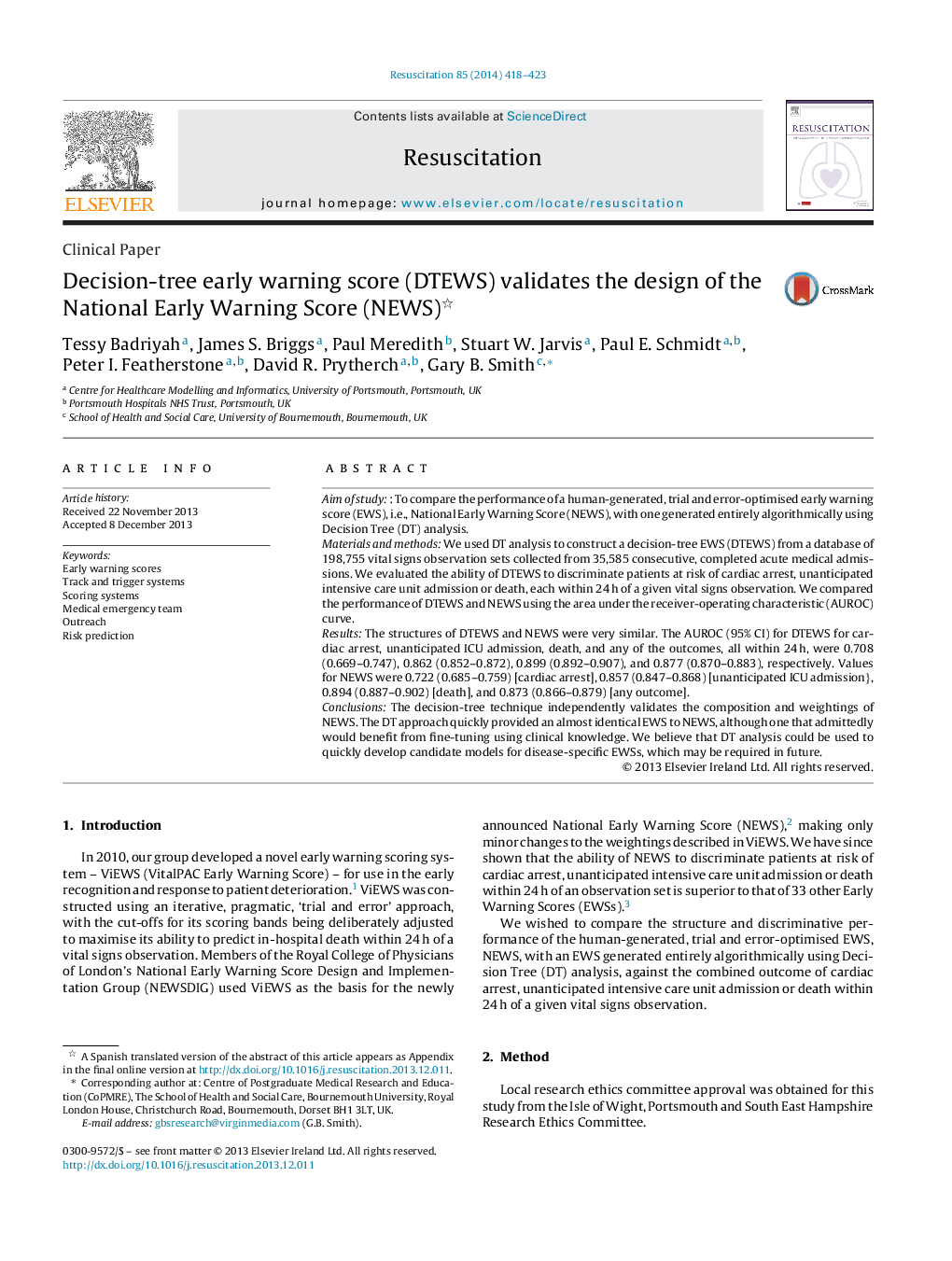| Article ID | Journal | Published Year | Pages | File Type |
|---|---|---|---|---|
| 5998711 | Resuscitation | 2014 | 6 Pages |
Aim of study: To compare the performance of a human-generated, trial and error-optimised early warning score (EWS), i.e., National Early Warning Score (NEWS), with one generated entirely algorithmically using Decision Tree (DT) analysis.Materials and methodsWe used DT analysis to construct a decision-tree EWS (DTEWS) from a database of 198,755 vital signs observation sets collected from 35,585 consecutive, completed acute medical admissions. We evaluated the ability of DTEWS to discriminate patients at risk of cardiac arrest, unanticipated intensive care unit admission or death, each within 24Â h of a given vital signs observation. We compared the performance of DTEWS and NEWS using the area under the receiver-operating characteristic (AUROC) curve.ResultsThe structures of DTEWS and NEWS were very similar. The AUROC (95% CI) for DTEWS for cardiac arrest, unanticipated ICU admission, death, and any of the outcomes, all within 24Â h, were 0.708 (0.669-0.747), 0.862 (0.852-0.872), 0.899 (0.892-0.907), and 0.877 (0.870-0.883), respectively. Values for NEWS were 0.722 (0.685-0.759) [cardiac arrest], 0.857 (0.847-0.868) [unanticipated ICU admission}, 0.894 (0.887-0.902) [death], and 0.873 (0.866-0.879) [any outcome].ConclusionsThe decision-tree technique independently validates the composition and weightings of NEWS. The DT approach quickly provided an almost identical EWS to NEWS, although one that admittedly would benefit from fine-tuning using clinical knowledge. We believe that DT analysis could be used to quickly develop candidate models for disease-specific EWSs, which may be required in future.
